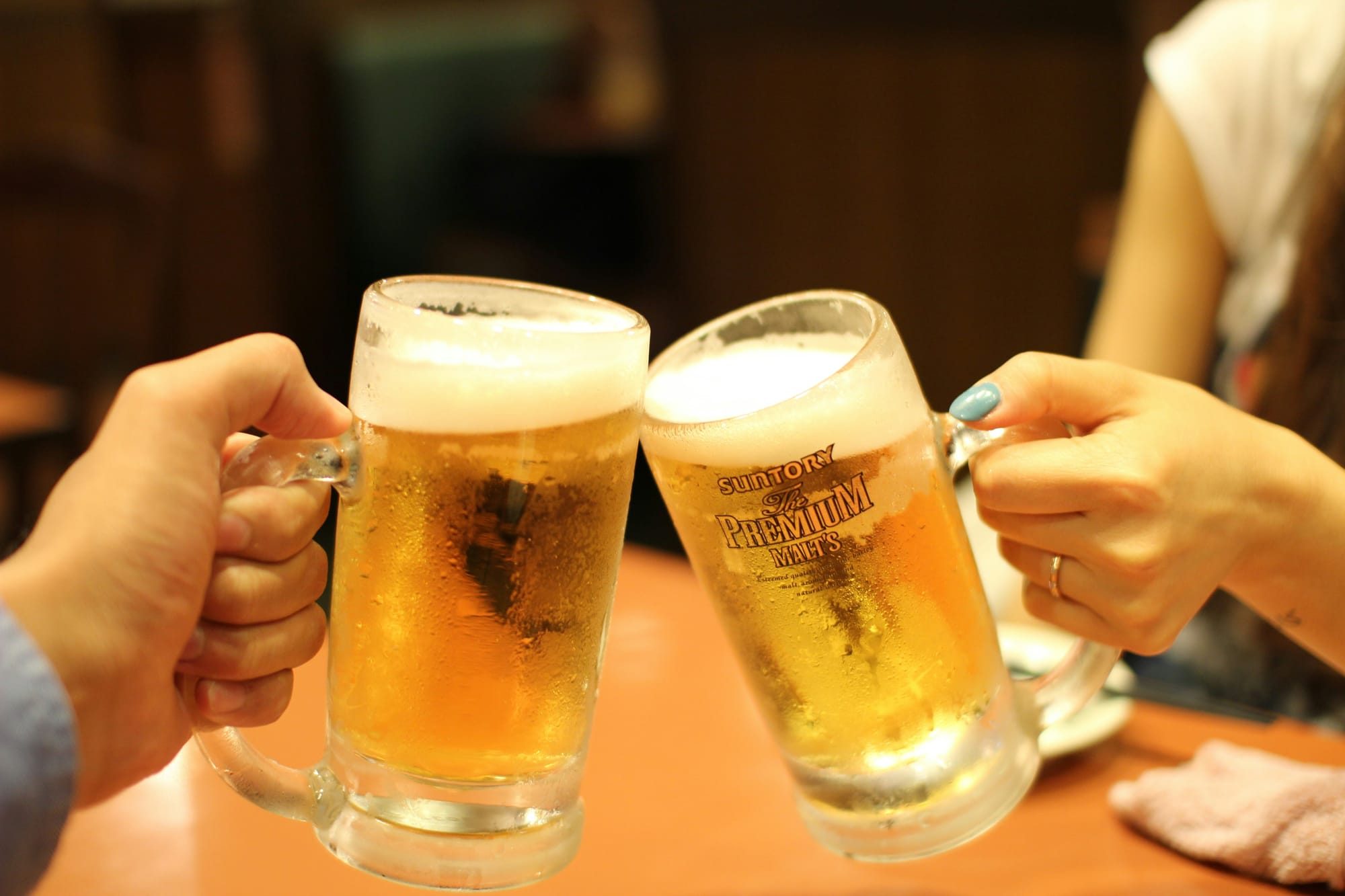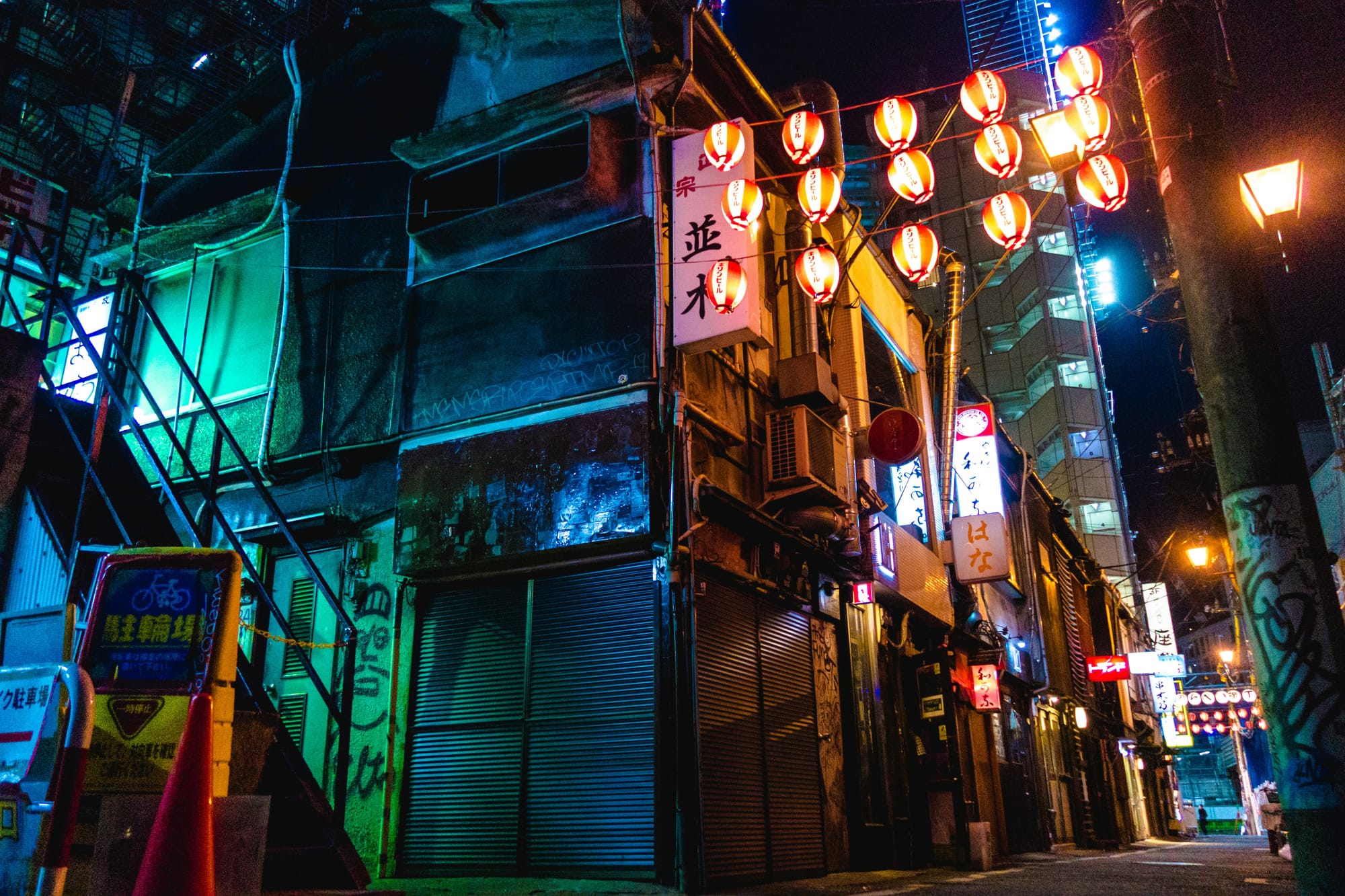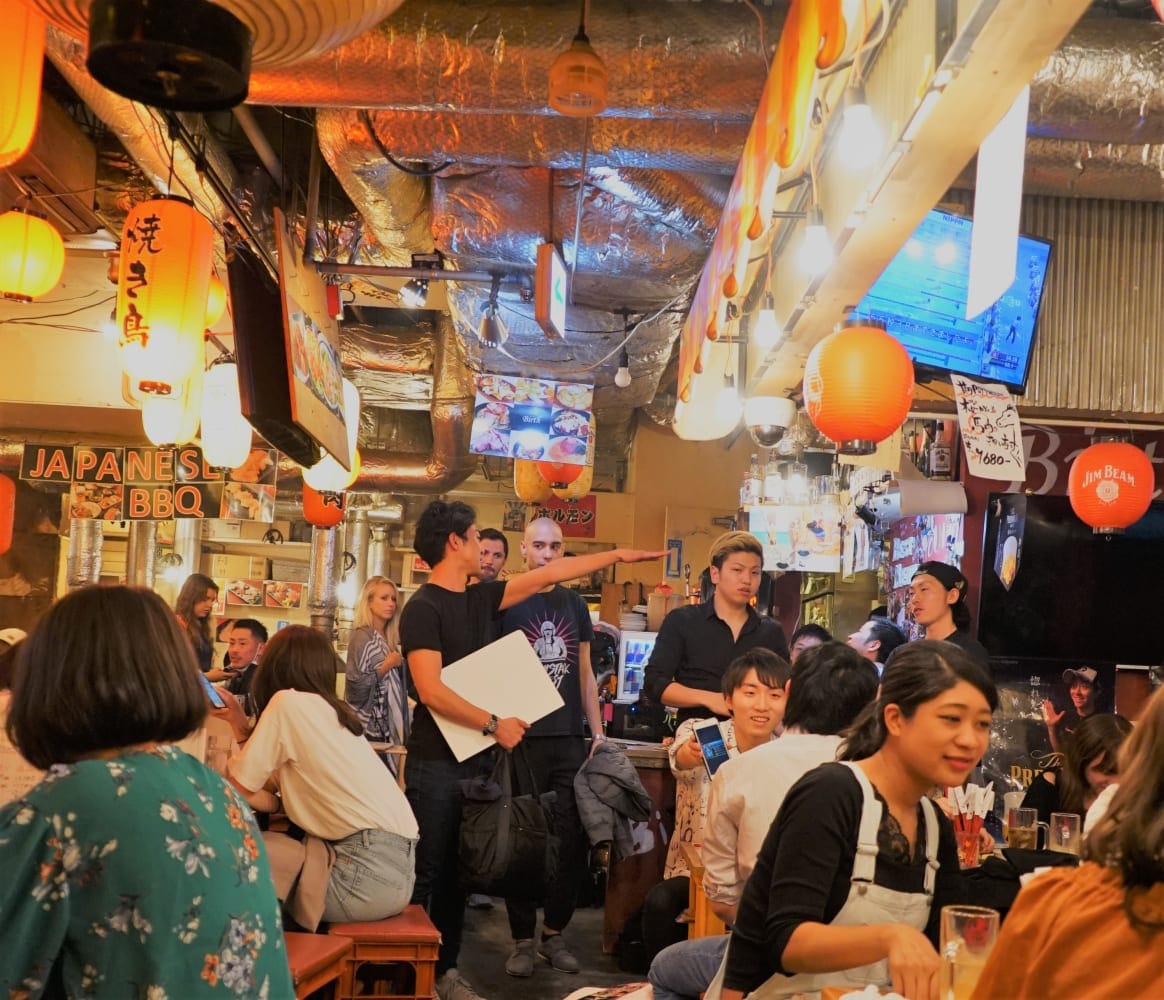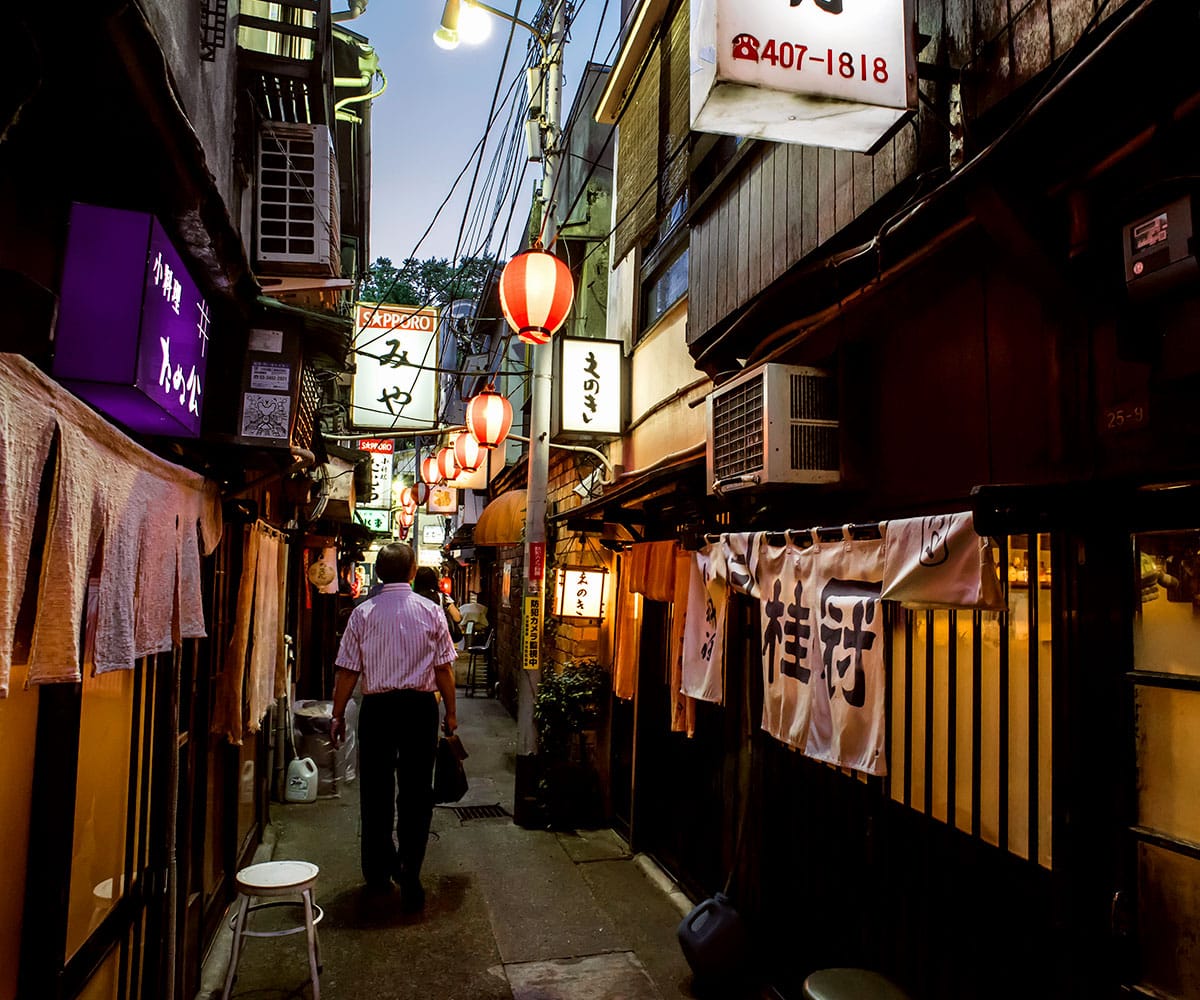Shibuya is known worldwide as a hub for fashion and culture. It's packed with attractions, including spots for dining and shopping, the famous Scramble Crossing, and the Hachiko statue.
With ongoing redevelopment plans, it's a constantly evolving, cutting-edge neighborhood. It's also a focal point for youth culture, with a high concentration of live music venues and theaters. At the same time, it's home to many historical art museums and galleries, giving it an artistic dimension as well.
Recently, it has also gained popularity as a setting for anime. This diverse Shibuya remains vibrant at night, offering such a rich nightlife that it's called "the city that never sleeps."
While there are many trendy, modern establishments, I will introduce a long-standing drinking district that has supported Japanese drinking culture in Shibuya for many years.
Drinking Culture in Japan

From a global perspective, Japanese people often have a serious image, and drinking isn't typically associated with them. As such, many are surprised to learn that many Japanese drink alcohol almost daily, not just on special occasions. What's characteristic about Japanese drinking culture is the high frequency of alcohol consumption.
While the overall alcohol consumption of Japanese people isn't particularly high compared to the rest of the world, the frequency of alcohol consumption is among the highest. In fact, my husband and father look forward to their nightly drink more than anything, and I have many friends who prepare dinner with a beer in hand every evening.
While businessmen in suits are often thought to go straight home after work, many actually stop by izakayas (Japanese pubs). There are many affordable places to drink casually, and it's not uncommon to go bar-hopping.
Drinking districts with rows of izakayas can be found throughout Japan, with the traditional atmospheric alleys called "yokocho" being particularly popular.
What is Shibuya Nonbei Yokocho?
Source: Official website
A Historic Yokocho with Over 70 Years of History

Just a 3-minute walk from Shibuya Station, along the JR Yamanote Line, there's a drinking district with 38 establishments lined up in a narrow alley. This street, which still retains its Showa-era atmosphere, is called "Nonbei Yokocho" and continues to be loved by many.
It's said to have originated from the black markets that emerged immediately after World War II. After Japan's defeat, the country was under Allied occupation, led by the United States, for seven years. In 1950, regulations by the GHQ (General Headquarters) reportedly led to the relocation of street stalls to fixed establishments, marking the beginning of Nonbei Yokocho.
This year marks its 74th anniversary, a Showa-era landscape that has survived despite being buffeted by waves of redevelopment many times.
A Wide Variety of izakayas, bars, and restaurants
Nonbei Yokocho currently houses 38 diverse eating and drinking establishments. "Nonbei" is a term for someone who loves and frequently drinks alcohol, while "Yokocho" refers to a side street off a main road.
True to its name, it's a drinking district that attracts alcohol enthusiasts, with many establishments perfect for a quick drink, such as izakayas, bars, yakitori (grilled chicken) shops, and oden (hot pot) shops.
Today, it has become a popular spot for young people and foreign tourists seeking a retro Showa-era atmosphere. The area has also seen an increase in stylish establishments, including bistros, curry shops, wine bars, and coffee shops, offering a truly diverse range of options.
Most shops are small
Nonbei Yokocho is characterized by small shops crowded together along the railway tracks. Each establishment is typically about 2-3 tsubo (6.6-10 square meters) in size, with seating for only 5-10 people on the ground floor. (Some shops have a second floor.)
First-time visitors might be surprised by how tightly packed people are, shoulder to shoulder. However, this closeness allows for natural conversations with the shop owner and neighboring customers, offering a chance to experience traditional bar culture firsthand.
Above all, it's homey and might make you feel strangely comfortable. It's recommended to visit in groups of 1-2 people, avoiding larger groups.
Bar-Hopping is the Norm
Due to the small size of the establishments in Nonbei Yokocho and the limited seating capacity, it's not advisable to stay in one place for too long. When the shop gets full, those who arrived earlier should take the cue to move on to the next establishment.
To avoid monopolizing the small space, "bar-hopping" (hashigozake) to improve customer turnover is an unspoken rule.
"Hashigozake" originally meant visiting familiar bars in order, but now generally refers to visiting multiple establishments in succession.
Points to Keep in Mind
Remember to Be Courteous
While basic manners are important in any establishment, they're particularly crucial in Nonbei Yokocho due to the close proximity to shop owners and other customers.
First, greet the staff when entering. Make eye contact and say "Konbanwa" (Good evening) or "Konnichiwa" (Hello). A smile or small bow when making eye contact is also fine. Show respect as you enter.
Be mindful of the limited table space and avoid cluttering it with plates and glasses. Ask for permission from both the shop owner and other customers before taking photos.
Even when the alcohol starts flowing and spirits are high, it's important not to be too loud or rowdy. Don't forget to express gratitude when leaving.
Don't Overstay
As mentioned earlier, long stays are discouraged. Plan your order accordingly from the start. Be careful not to over-order, as portion sizes tend to be generous. Try not to linger over your drinks.
While everyone has different paces for eating and drinking, aim to enjoy moderate conversation and wrap up at an appropriate time.
When it gets crowded, those who arrive earlier should be prepared to leave. Be careful not to miss this timing by drinking too much - a slight buzz is probably the most enjoyable state.
Follow Each Shop's Rules
While every drinking district has its own rules and individual shop policies, the long-established shops in Nonbei Yokocho have some unique rules of their own.
From seating arrangements and ordering procedures to smoking rules and photo-taking policies, adopt a "when in Rome" mindset and start by learning the local customs.
When entering a new shop, clearly state that you're a first-timer. Not only the shop owner but also regular customers will likely share recommended menu items and explain the rules.
Interacting with people is one of the greatest pleasures of the traditional Nonbei Yokocho. Enjoy these once-in-a-lifetime encounters.
Prepare Cash
For the final bill, preparation is key for a smooth process. Many of these traditional establishments still don't accept credit cards or electronic payments. Be sure to bring cash.
Moreover, consider bringing 1000-yen notes and coins rather than 5000 or 10000-yen notes, as change might be limited.
Also, be prepared for group billing rather than individual checks.
Some places may have seating charges or cover charges, and there might be some ambiguity about "otoshi" (small appetizers served automatically).
Tours Are Recommended for Exploring Shibuya's Izakayas and Bars

For an efficient tour of Shibuya's izakayas and bars, organized tours are recommended. Magical Trip offers a "Shibuya Bar Hopping Night Tour in Tokyo."
This 3-hour guided tour starts at the Scramble Crossing, visits tourist spots, and then takes you to three izakayas or bars. It includes "Shibuya Hyakkendana," another drinking district that, like Nonbei Yokocho, has escaped redevelopment and retains a Showa-era atmosphere.
The opportunity to visit establishments known only to locals in this area is a valuable experience that will create lasting memories.
Shibuya Bar Hopping Night Tour in Tokyo
Shibuya Nonbei Yokocho has over 70 years of history and has repeatedly escaped waves of redevelopment, retaining its strong Showa-era atmosphere to this day.
This deep area, which feels like a time slip to the Showa era, might be intimidating for first-time visitors.However, it has recently gained popularity as a tourist spot, and it's becoming more common to see foreign tourists there.
Please gather your courage and visit. A unique experience that you can only have in Japan awaits you.

